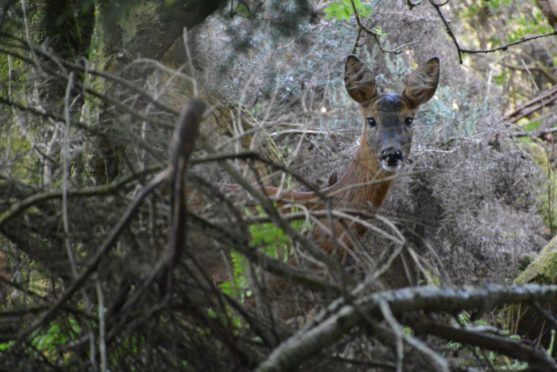Motorists are being urged to be vigilant for deer now the nights are drawing in.
With darkness falling earlier, deer are more likely to venture on to the grass verges near roadsides during peak commuting times as they look for food.
Scottish Natural Heritage (SNH) has called on drivers to be extra cautious and has placed warning messages on electronic road signs on some of the country’s major roads.
It is estimated the number of collisions between deer and vehicles could be as high as 9,000 per year in Scotland, resulting in 50 to 100 human injuries.
The majority of collisions take place in early evening through to midnight, with another spike between 6am and 9am.
Jamie Hammond, SNH deer management officer, said: “From October to December, deer are more likely to be on the road as they move down to lower ground to find food and shelter.
“The highest risk is from sunset to midnight and shortly before and after sunrise.
“In these peak times in particular, we advise motorists to slow down and watch for deer crossing roads.
“Be aware that if you’re driving near woods, deer can suddenly appear before you have time to brake.
“If you do hit a deer, report it to the police, even if you’re uninjured and your car isn’t damaged, as the deer may be fatally injured and suffering.”
The warnings will be placed on signs on the A9 Inverness to Perth road, the A87 Invergarry to Uig road, the A82 Glasgow to Inverness road, the A85 Oban to Dundee road and the A835 Inverness to Ullapool road.
Jochen Langbein, who oversees the Deer Vehicle Collisions Project, added: “The increased risk of collisions with deer in late autumn is greatest in areas where our three largest deer species – red, sika and fallow deer – are most abundant.
“Late autumn coincides with their mating season, when they are highly mobile on the move to and from their rutting areas, and adult males will often chase blindly across roads in pursuits of females or rival males.
“In addition, the shorter day lengths brings rush hour traffic periods in line with the peak dawn and dusk activity times of all our deer species, adding further to an increase in deer collision risk.”
